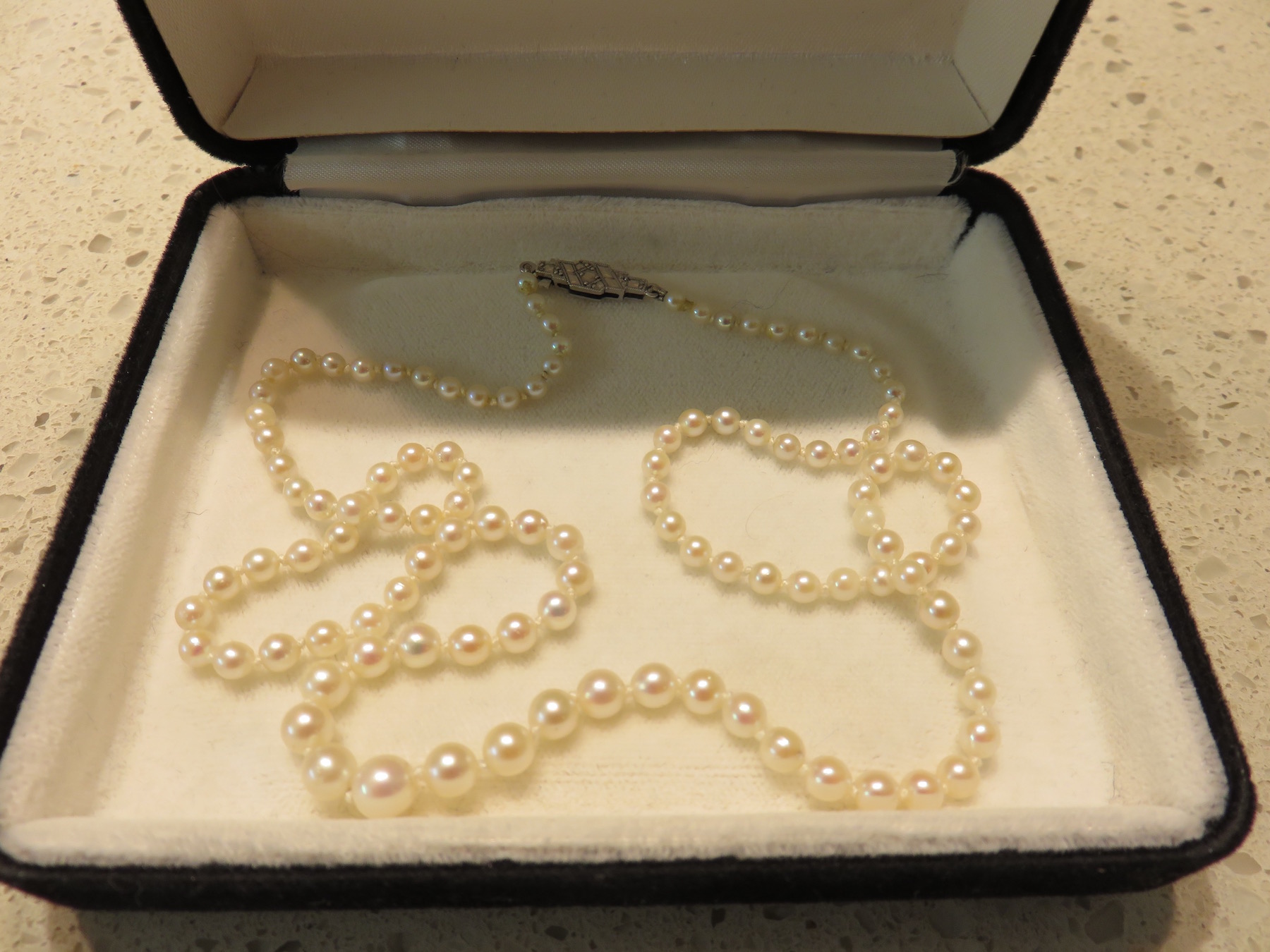Pearls
It was the story of the pearls that suddenly changed something in what I thought about how Kathleen related to things and futures. Mostly she talked about how little she cared about material things, stressing her liking of tidiness and her willingness to get rid of what she saw as unnecessary clutter. This came through when she talked about disliking the feeling of being in houses that she described as ‘stuffed to the gunnels’ (or did she say ‘stuffed to the dodos’, indicating the deathly, suffocating nature of the amassed ‘clutter’?); in jokes about her not understanding things that her boyfriend chose to keep (‘Why do you need to keep the t-shirt you wore to that gig when you agree that you will never wear it again?’) and hopes of disposing of some of them when he wasn’t paying attention. She said how the complete crash of her computer hard-drive had not bothered her as much as she had expected, even though there were photographs on it, some of important life events, that she did not have copies of. Related partly as a learning experience in realizing that material things did not constitute memories themselves, it also seemed to be a confirmation of a strongly, consciously adopted stance. Objects could be lovely – and Kathleen clearly had a highly developed aesthetic sensibility and discernment – but they shouldn’t be constraining or set limits to what one might do in the future. Objects shouldn’t hold you back.

The pearls story was preceded by one that she told in order to show how unsentimental she was about things, inadvertently also showing her aesthetic discernment in the process. A set of girlfriends had bought her a ring for a significant birthday. But she didn’t like it (‘I’d never have worn it’) and so she went and changed it. Lots of other people wouldn’t have done this, she reflected, joking that it showed how ‘heartless’ she was. ‘Did you tell them?’ I asked, wondering what I would have done, guiltily recalling an awkward occasion of my own and the more frequent times when I had not only accepted but slightly resentfully worn gifts I did not really like. ‘No, no’, she replied, ‘I probably could have done because they know me and they would have just said, “Oh, that’s Kath, of course she’d do that if she didn’t like it”, but no, I didn’t’. Social relations and investments create their hesitations and limits.
The pearls story flowed from that about the ring in that both were about jewelry, special-occasion jewelry. Jewelry – that strange category of adornment that so often is expected to last beyond other things that we wear and to even last out over generations. I was not from a family that ever went in for this but my daughters have both been gifted expensive items for significant birthdays – provided with receipts ostensibly so that we could insure them but having the main effect of me feeling astounded that anybody would choose to spend so much on undistinguished items that are worn so little. The jewels sit, rarely seeing daylight, in a locked cupboard. Kathleen’s pearls too seemed to be part of an intentional creation of heirlooms – but in a more interesting way.
Her family had at some point developed their own tradition of gifting girls with a string of pearls on their thirteenth birthday. Kathleen still has hers in the country in which she was brought up, which is not where she lives now, and that is what she means when she uses the word ‘home’. Apparently, if you do not wear pearls they go yellow. But even so, and even though she was not ‘at all the sort of person to wear pearls’, and despite her willingness to get rid of things, she had not disposed of them. Her mother, who lives back home and is an even more dedicated declutterer than is Kathleen (‘We don’t need to keep all those photos of you and your sisters when you were younger do we?’), still has hers, even though she too is not a ‘pearls person’. Each year, Kathleen explained, when she goes back home, she and her mother would wear their pearls for a few days in order to ‘clean them’.
Jewelry – that strange category of adornment that so often is expected to last beyond other things that we wear and to even last out over generations.
‘It’s funny’, Kathleen reflected, ‘why I have never brought them here with me, in all these years that I have been here. But I never would. Or if I did, that would mean something major, like that I was leaving home for good’. The pearls are a little anchor back into home, back into family tradition, and ritually reinforced through the periodic wearing of them. But they are not only about those past ties and family history, and not even just about mother-daughter communitas. They are also about a future, a hoped for future that might never happen but that always hovers as a possibility is potentially even quite soon; a future back home; a future in which things – things with their tying down capacities – might not feel like quite such a burden.
They are also about a future, a hoped for future that might never happen but that always hovers as a possibility is potentially even quite soon; a future back home.
